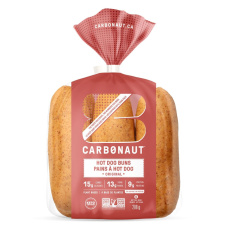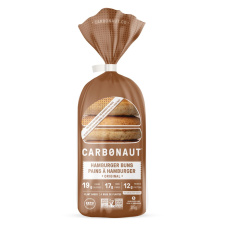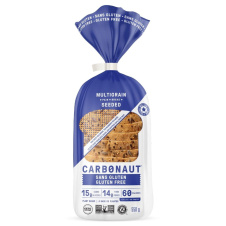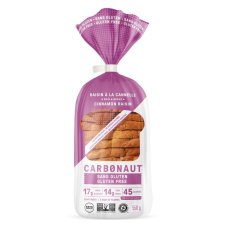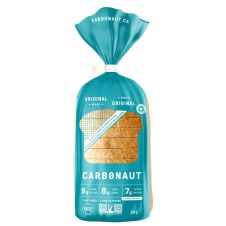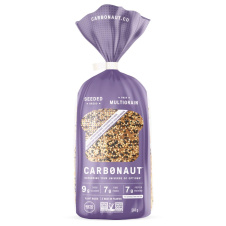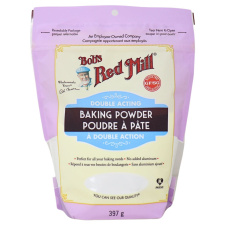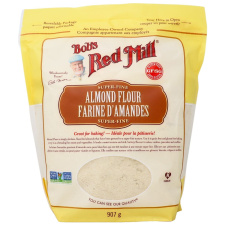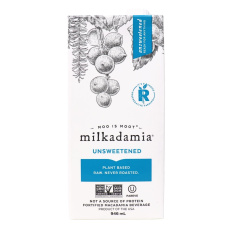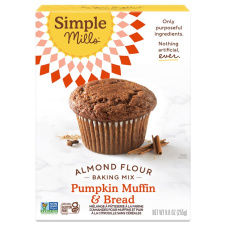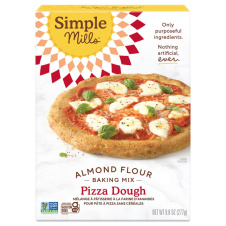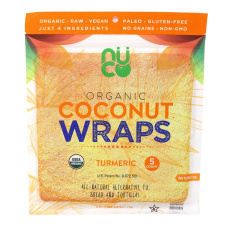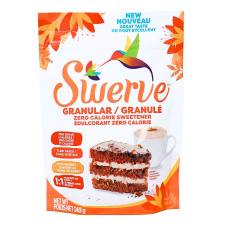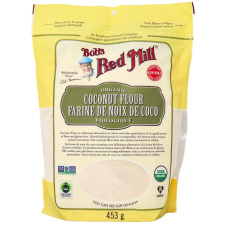Affichage navigation

How to Make Fresh Keto Bread
Learn how you can have all the bread and still stick to your Keto diet too - because you shouldn't have to give up baguettes, toast bread, and hamburger buns! We break down what you need for easy to make, low-carb bread, perfectly suited for your lifestyle.
Thinking about following the keto diet but don’t think you can give up bread? Well, what if we told you that you didn’t have to? That’s right, you don’t need a bread alternative, you can make keto bread at home and have all the bread you can think of! We’re talking keto toast, keto baguettes, keto burger buns, keto sandwich bread, keto cinnamon rolls and more! You’ll get all of the pleasure and none of the carbs! Bread making is an art that typically requires years of experience to get it just right but, we’re going to do our best to train you in less than ten minutes. Let’s begin!
Keto Bread Ingredients
Bread typically contains a few common ingredients: flour, yeast, sugar, oil and eggs. But, since many of these ingredients are restricted or off-limits on the keto diet, you’ll have to get a little creative! It’s no secret that there are plenty of easy keto bread recipes out there, all which differ in some way. So we ventured through hundreds of recipes to determine exactly what you’ll need.
The essentials:
Keto Flour:
After searching to the near depths of Narnia for keto bread recipes, there are two types of flour commonly found in keto Bread:
Almond Flour: Almond flour is naturally gluten-free and low in carbs making it a suitable candidate for your keto bread. It adds a nutty flavor and allows your low-carb bread to stay moist. You’ll also get the added nutritional benefits from the almonds themselves, such as vitamin E, protein, and healthy fats.
Coconut Flour: Coconut flour is another common flour used when baking ketogenic bread. Coconut flour is naturally lightly sweet, and it offers plenty of nutrition. Coconut flour is rich in anti-inflammatory fats and fibre. Using coconut flour for your keto bread can result in a chewier bread.
Which flour is better for making keto-friendly bread?
Our answer: Why have one when you can have both? Both types of flour can add different properties to your keto-friendly bread. The combination of flours can help you create a moist and chewy keto bread. However, it is up to personal preference. Nutritionally, the coconut and almond flour offer similar nutrition. Your choice of flour may depend on your taste and texture preferences. If you prefer a sweeter bread, you can opt for the coconut flour. If you prefer a moist and fluffier bread you could vouch for the almond flour.
And, if you’re dedicated to your health you may also want to consider the following: If you are really tight on carbs, the almond flour is a better choice as it is lower in carbs than coconut flour. However, if you’re interested in boosting your gut health, the fibre in coconut flour may be just what you need. Additionally, if you suffer from chronic inflammation, coconut flour has an abundance of healthy fats that can help reduce inflammation. Nonetheless, if you suffer from irritable bowel syndrome (IBS) or follow a low FODMAP diet, you’ll have to experiment to determine which flour your body can tolerate since both of these types of flour are high-FODMAP foods.
How to Bake with Almond Flour and Coconut Flour?
If you choose to follow a recipe to create your keto bread or take a whack at creating your own, there’s one factor that you need to consider. It is not recommended to swap almond flour for coconut flour and vice versa. Coconut flour absorbs a lot more moisture than almond flour, meaning that you’ll require less coconut flour than you would if you used almond flour. Additionally, these flours are naturally drier than regular all purpose flour, so you’ll have to add some extra moisture via eggs, milk, or oil to name a few. It is also recommended to bake at a slightly lower temperature to prevent a dry and crumbly bread, meaning that you’ll have to bake your keto bread for longer.
Now, back to our other essential ingredients:
Psyllium Husk:
Psyllium Husk is fancy talk for plant fibre. It is most known for helping to keep your bowel movements regular. It has tonnes of prebiotics that help to keep your digestive system happy and your body healthy. Prebiotics can help keep your immune system strong and fight inflammation. Psyllium Husk may also help reduce cholesterol, control diabetes, and may even contribute to weight loss. Therefore, we can conclude that it is an all-around star. Now that you know what it does for your body, you may be wondering why on earth is it so popular in keto bread recipes? The answer is simple, psyllium husk adds bulk to the bread dough; it absorbs the water allowing you to shape the bread dough. Although there are many recipes that lack psyllium husk, there are many reasons listed above that explain why you should consider adding it to your keto bread recipe.
Xanthan gum:
Xanthan gum is another ingredient that is commonly found in keto bread recipes. It is known for its role as a thickening and stabilizing agent, and as an emulsifier. An emulsifier allows your ingredients to mix seamlessly, creating an even product. Additionally, it will add elasticity and thickness to the keto bread dough, creating the typical bread texture. Since xanthan gum closely resembles the properties of gluten, adding it to your keto bread recipe can help you create a gluten-free keto bread.
Eggs:
Eggs are an ingredient commonly found in baking recipes. Recipes may differ on whether it requires the whole egg or specific parts of the egg due to their varying properties of the different parts of the egg. Majority of the keto bread recipes that we dissected called for the whole egg. However, few required just the egg whites. Egg whites, especially when whipped, can add pockets of air and work as a leavening agent, creating those small air bubbles that are commonly seen on bread, allowing your keto bread to rise. However, egg whites tend to absorb plenty of water, so using too many can result in a dry keto bread. Since the egg yolk works as an emulsifier and a fat, you can opt out of using the whole egg if an emulsifier and a good amount of fat are already present in the recipe. Depending on your desired result, using the whole egg may be advantageous as it provides the best of both worlds.
Fat:
If there is one thing that all these keto bread recipes had in common was that they all required some form of fat. Some recipes relied on the egg yolk, some on coconut oil or butter, and some on some form of cheese. The fat is what gives bread most of its flavour, its soft texture, and what fills the air with that bakery-like aroma. Choosing to omit fat from the recipe will create a baguette-like bread, crusty on the outside yet soft on the inside. If you’re simply looking to create a typical bread loaf for things like toast, then a fat is necessary. You may also want to consider the type of fat that you want to use, as some fats like butter can aid in leavening. Therefore, your final results might differ if you choose to use oil. Additionally, using oil instead of butter or cheese, can change the texture to a chewier bread.
Salt:
When it comes to baking, salt is an underrated ingredient. But, salt can make the difference between a good keto bread and a great keto bread. Although often anticipated to produce a salty product, salt is necessary to bring out the sweetness of the product and create a lively flavour. Adding to your keto bread dough will also increase the elasticity of the dough, getting you closer to the typical bread texture.
Baking Powder:
While we were fighting with hunger from reading all these delicious keto bread recipes, we realized that the majority of these recipes included baking powder. Baking powder is traditionally known for its leavening properties, making this ingredient essential for bread making. However, you may find that unlike traditional bread making recipes, the majority of keto bread recipes do not use yeast. A reason for this is that yeast requires sugar to activate, and sugar is restricted in the keto diet. Some recipes opted to use artificial sweeteners to activate the yeast and saw some success.
Secrets for a Perfect Keto Bread:
We definitely learned a few tricks of the trade from reading all these recipes, and we’re going to share them with you.
First of all, you may want to consider adding potato starch to your recipe. Potato starch is what can give your keto bread a natural, white bread appearance. However, if you are not bothered by the colour of your bread, you can skip this step. Another secret of the trade is adding gelatin to your bread batter. Similar to xanthan gum, gelatin can add extra chewiness to your batter and mimic gluten. Gelatin may be an option if you’d prefer to skip on the xanthan gum and achieve a chewy texture. Lastly, a best kept secret ingredient is vital wheat gluten. Vital wheat gluten will improve the texture of your keto bread, and help in leavening, creating a light and airy keto bread loaf. However, vital wheat gluten may only enhance bread doughs containing yeast. Additionally, if you are gluten-free or gluten intolerant, vital wheat gluten is not for you.
How to Make Keto Bread
Keto bread is quite simple to make, the difficult part is deciding on which ingredients to include. In general, most recipes required that you mix the dry ingredients and then add the wet ingredients to create a dough. Most of the keto bread recipes did not require any kneading or proofing since most of these recipes do not include gluten or yeast. After combining your ingredients, toss your keto bread in the oven and allow the air to fill with the pleasing aroma of bread. Once it’s ready, allow it to cool completely and then use a piece of parchment paper to transfer the bread loaf from the pan to your storing area.
How to Store Keto Bread
Keep your keto bread in the fridge in an airtight container to seal freshness and minimize air and moisture. If you choose to freeze you keto bread ensure to slice it before freezing and allow it to thaw in your fridge overnight before eating. When frozen, your keto bread can last you for approximately a month, otherwise it may last you for one to two weeks.
Where to buy Keto Bread?
For those moments when you don’t have time to bake a fresh loaf, there are ready-to-eat keto bread options available as well – so you can enjoy keto hamburger buns, keto hot dog buns, keto sandwich bread, and more! Enjoy egg and avocado on seeded keto bread for breakfast, or whip up a keto Turkey BLT on some white keto bread for lunch! Or turn them into a wrap, with a keto-friendly tortilla wrap!
So whether you’re looking for ready-to-eat keto bread, at Natura Market we’ve got you covered for all of your keto bread & wraps needs!








